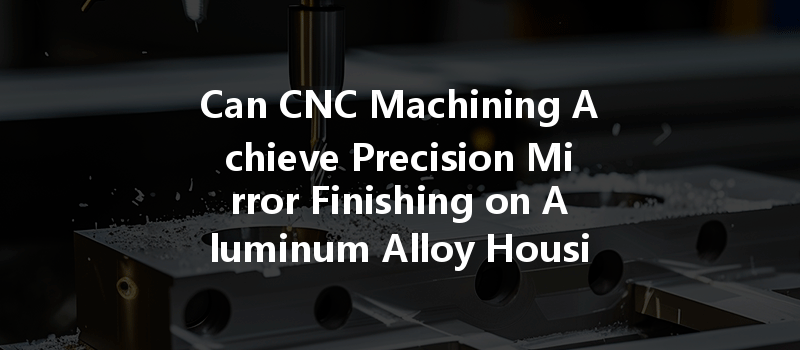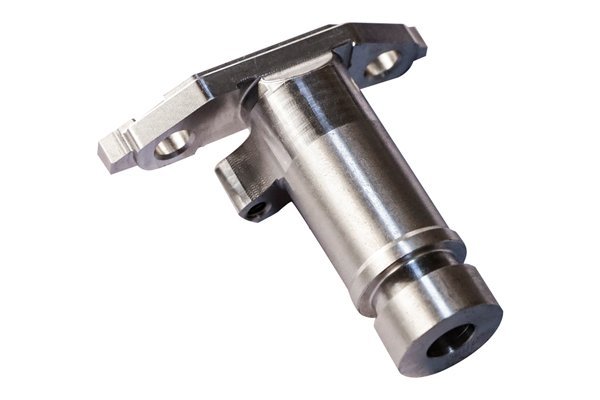When it comes to precision engineering, the stakes are high. Did you know that CNC machining can achieve tolerances as tight as ±0.001 inches? For manufacturers, this impressive precision opens the door to numerous applications, including the production of aluminum alloy housings with a mirror finish. But what does it take to achieve such an exquisite finish? In this extensive blog, we’ll delve into the intricacies of CNC machining, examine the techniques necessary to produce mirror-finished aluminum alloys, and explore the implications of this technology within various industries.
Understanding CNC Machining
Before diving into the specifics of mirror finishing, it’s essential first to understand what CNC (Computer Numerical Control) machining entails. CNC machining employs computer-controlled machinery to produce parts and components with high levels of precision. The process involves removing material from a solid block of metal, plastic, or other materials through subtractive manufacturing techniques, including milling, turning, and grinding.
When working with materials like aluminum alloys, CNC machining offers several advantages:
The Importance of Mirror Finishing
Mirror finishing refers to achieving a shiny, reflective surface on a workpiece. This process is crucial for several industries, including automotive, aerospace, and decorative applications. Not only does a mirror finish enhance aesthetics, but it also contributes to functionality by improving corrosion resistance and wear properties.
In applications such as housing for sensitive electronics or components that are exposed to harsh environments, a mirror finish can provide added benefits, such as:
Step-by-Step Process of CNC Machining Aluminum with Mirror Finishing
Achieving a precision mirror finish on aluminum alloy housings involves various stages of machining. Let’s look at the step-by-step process below.
Choosing the right aluminum alloy is crucial. Some of the most commonly used alloys for mirror finishing include:
Selecting the appropriate alloy not only determines the mechanical properties but also influences the feasibility of achieving a fine finish.
Setting up the CNC machine for precision machining is critical. You’ll need to follow these guidelines:
In this stage, the bulk of the material is removed to create the general shape of the aluminum alloy housing:
Once the rough shape has been achieved, the focus shifts to refining the surface quality:

After machining, it’s essential to smooth out any sharp edges that may have formed during the cutting process:
This is the most critical stage in achieving a mirror finish. Depending on the desired finish quality, techniques may vary:
In some cases, an additional surface treatment may be recommended to enhance corrosion resistance or optical properties:
Quality Control Measures
Implementing rigorous quality control measures is imperative to ensure that the dimensional tolerances and surface finish requirements are met:
Applications of CNC Machining with Mirror Finishing
The versatility and precision of CNC machining for mirror-finishing aluminum alloys make it suitable for various applications, including:
Environmental Considerations
As CNC machining processes advance, the importance of sustainability comes to the forefront. Here’s how manufacturers can adopt environmentally-friendly practices:
CNC machining has revolutionized the way we manufacture parts, enabling the production of high-precision aluminum alloy housings with mirror finishes. By meticulously following the steps outlined in this blog—from material selection and initial machining to polishing and quality control—manufacturers can achieve stunning results that fulfill both aesthetic and functional requirements.
As we continue to advance in technology, the importance of CNC machining capabilities cannot be understated. The ability to produce high-quality components efficiently will remain vital to industries ranging from automotive to aerospace.
While the world of detailed machining may appear complex, understanding and embracing CNC machining techniques is essential for any manufacturer aiming to stay competitive. With meticulous attention to detail and an understanding of the intricacies involved, businesses can produce industry-leading products that delight customers and enhance their brand’s reputation.
Reflect on how these techniques can benefit your operations and consider investing in more advanced CNC machining capabilities; the quality you achieve today could very well dictate your market position tomorrow.






